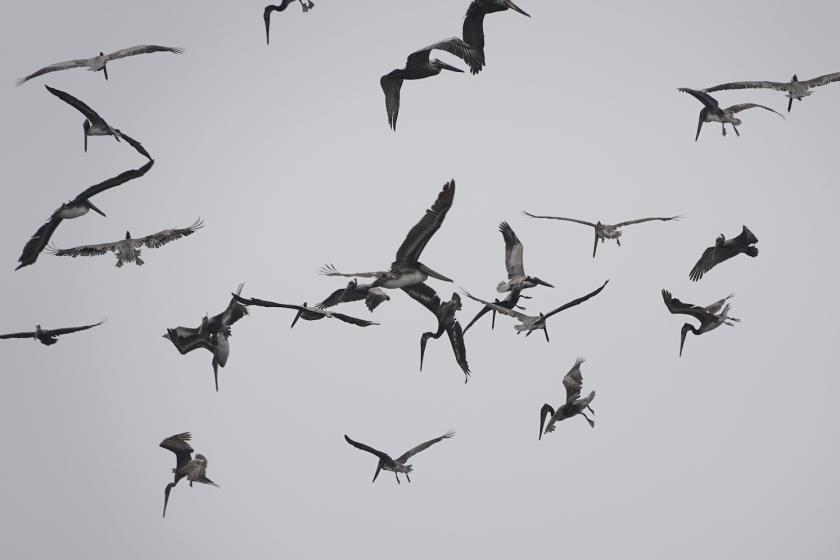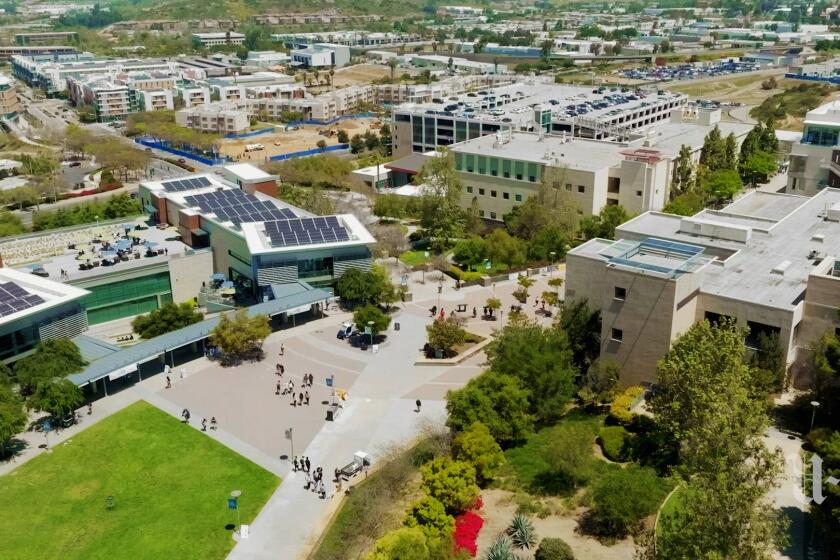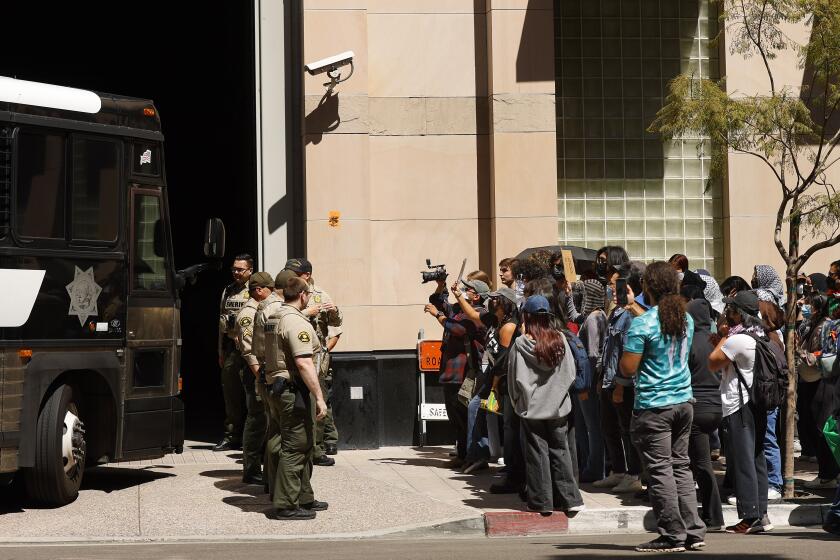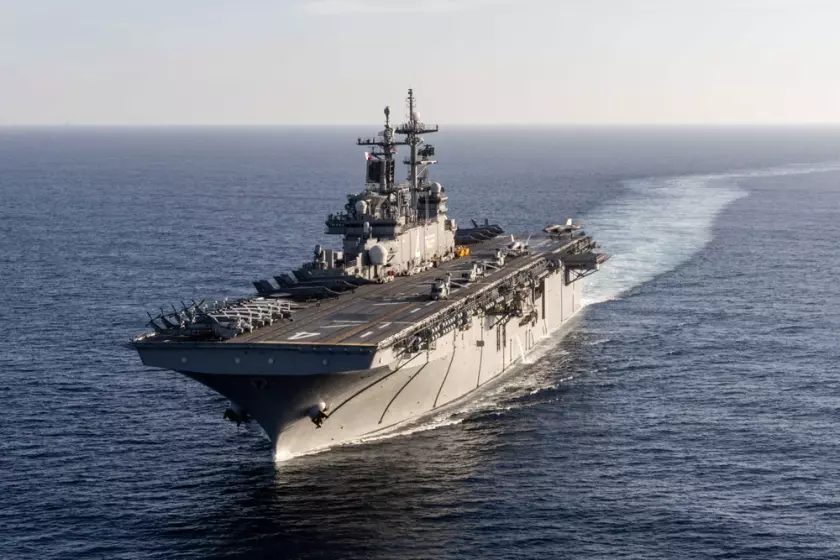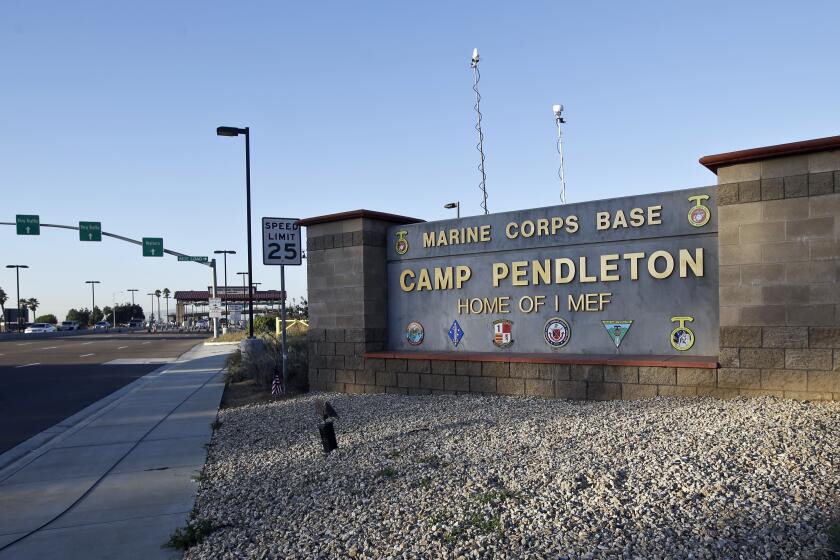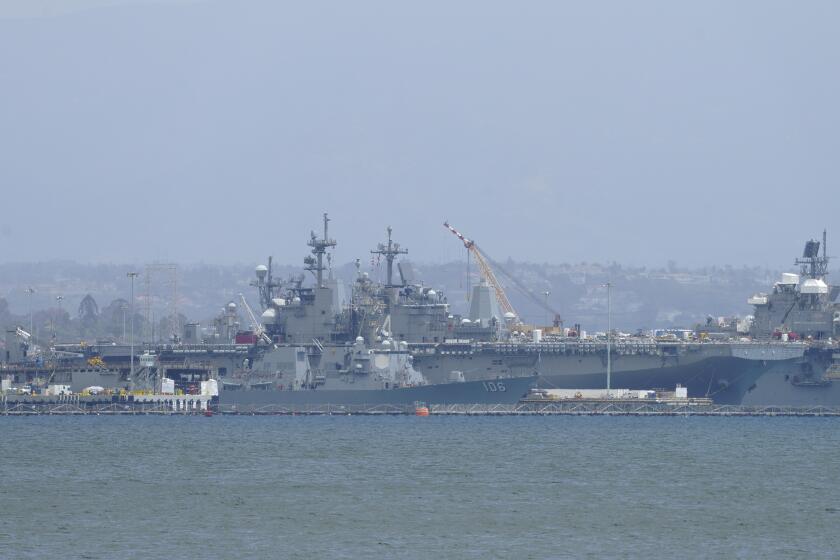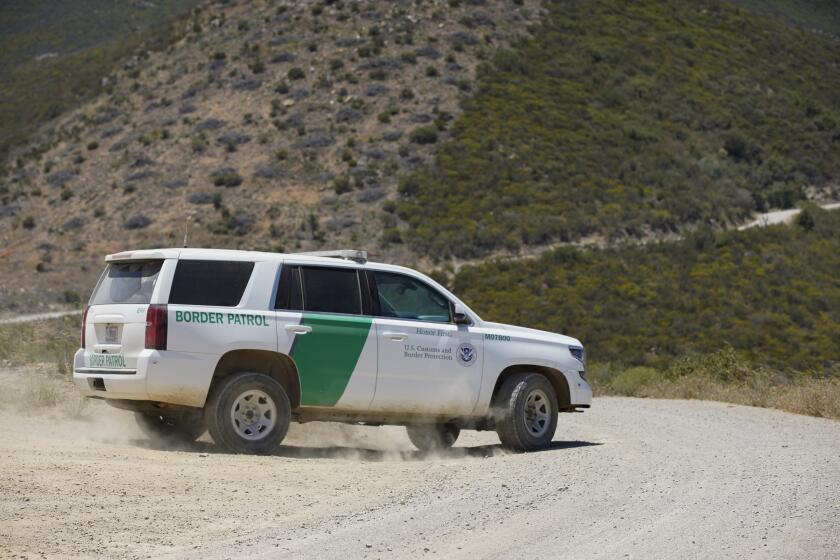Navy places a squadron of small, experimental sea drones in San Diego to help warships

It’s the Navy’s latest investment in uncrewed surface vessels, which are being effectively used by other navies around the world
The Navy deepened its fast-growing investment in sea drones Friday, creating a squadron of small, experimental uncrewed surface vessels, or USVs, that could be used for maritime security and possibly the firing of weapons.
The so-called Global Autonomous Reconnaissance Crafts, or GARCs, are 16 feet long and capable of traveling up to 40 mph in favorable sea conditions. The squadron will have four of them to start, but that number will mushroom as the Navy hustles to add hundreds more throughout the fleet.
The initial vessels cost about $750,000 apiece — a number that’s expected to fall once they’re mass-produced.
The Navy is already testing medium-sized USVs, which can range from 45 feet to 190 feet in length. They are largely seen as future intelligence, surveillance and reconnaissance platforms.
Development also is already underway on a large USV, which would likely range from 200 to 300 feet in length and serve as a missile launcher.
The small version is being introduced last inpart because the Navy is still figuring out how it can best serve the fleet’s interests when in it is lowered into the ocean from a large, crewed warship.
The experimentation is being pushed by global events, particularly the war between Ukraine and Russia.
“We have seen a dramatic increase in the use, the capabilities and the lethality of unmanned systems in Ukraine, a nation with a small navy,” said Vice Admiral Brendan McLane, commander of Naval Surface Forces. “They have sunk or damaged 16 Russian ships and have been able to deny the Russian Navy the use of the northwestern Black Sea.”
Most of the USVs used by Ukraine have been small sea drones that are comparatively hard to see on radar, enabling them to sneak into some areas — a very appealing feature.
The USVs “reduce the risk to human life in high-threat areas,” McLane said Friday. “They provide persistent surveillance over areas of interest, and because they give warfighters an inherent advantage.”
The Navy can operate the GARCs by remote controller and program them to roam the ocean autonomously.
Some of the new sea drones have already sailed all the way to San Clemente Island. The Navy said Friday that the USVs will soon be dispatched far greater distances.
Get Essential San Diego, weekday mornings
Get top headlines from the Union-Tribune in your inbox weekday mornings, including top news, local, sports, business, entertainment and opinion.
You may occasionally receive promotional content from the San Diego Union-Tribune.

